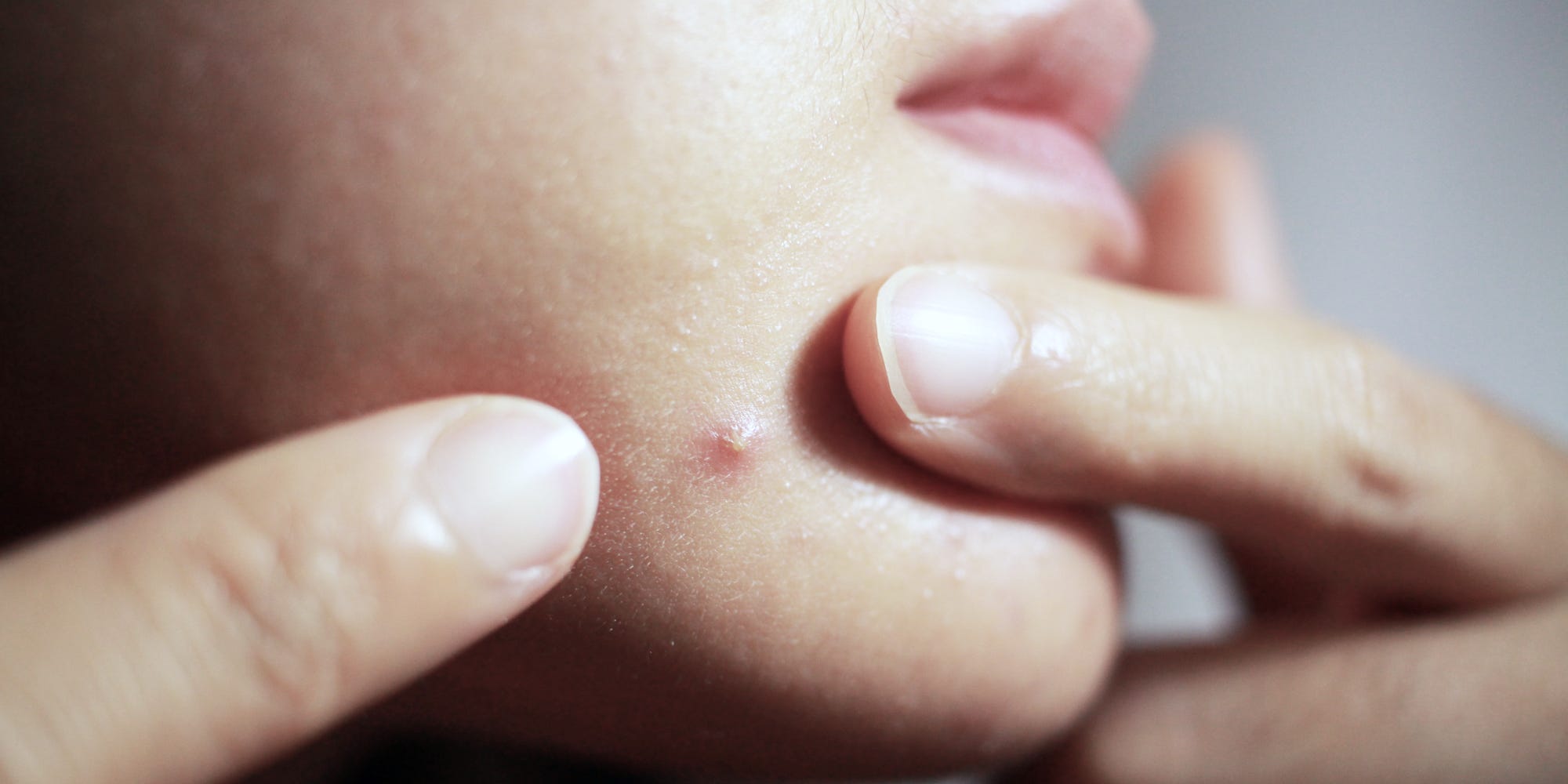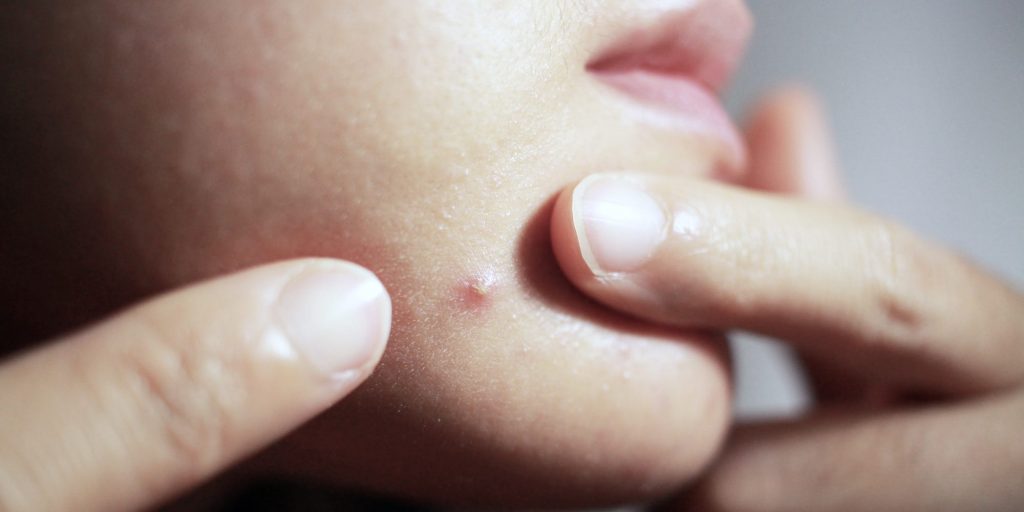
thitipa/Shutterstock
- To get rid of pimples fast, try ingredients that kill bacteria like benzoyl peroxide and sulfur.
- Tea tree oil is a natural anti-inflammatory and anti-microbial treatment that may also help.
- To treat acne while tightening your pores to prevent clogging, use witch hazel.
- Visit Insider's Health Reference library for more advice.
Pimples are no fun, and when one pops up on your face, it's likely that you want it gone ASAP.
The time it takes for a pimple to go away varies. Smaller pimples can clear up within several days, while cysts may take weeks, says Michele Green, MD, a cosmetic dermatologist in private practice.
However, you may be able to speed up the process a little by trying out some of the following treatments.
1. Benzoyl peroxide
This popular acne-fighting ingredient is medically proven to treat acne. It works by attacking the bacteria responsible for acne, says Green. Additionally, it minimizes excess sebum, aka oil, and removes dead skin cells, which helps to clear clogged pores.
How to use it:
You can find benzoyl peroxide in face washes, scrubs, and spot treatments. If you're just trying to get rid of a pimple or two, Green recommends opting for a spot treatment or gel containing benzoyl peroxide. This ingredient is particularly beneficial when you're dealing with a cystic pimple, since it has anti-inflammatory properties that can reduce the redness and swelling.
2. Tea tree oil
Tea tree oil is a natural anti-inflammatory and antimicrobial agent, Green says, which means it can kill acne-causing bacteria and reduce inflammation, swelling, and redness associated with acne.
A small 2017 study of 14 participants who used a tea tree oil gel twice a day for 12 weeks found that it significantly reduced facial acne.
How to use it:
Tea tree oil can irritate your skin so it needs to be diluted before you apply it. Green recommends adding one or two drops of the oil into your moisturizer, and then applying it to the pimple. Alternatively, you can look for products that contain this ingredient if you don't want to dilute the pure oil yourself.
3. Witch Hazel
Witch hazel acts as an astringent, meaning it dries up excess oil while also tightening the skin's pores, which prevents future clogs, Green says.
Furthermore, a 2014 review that analyzed studies around 52 moisturizing ingredients in common acne treatment products concluded that witch hazel's anti-inflammatory properties made it an effective weapon against pimples.
How to use it:
Commercial witch hazel is sold in liquid form. Therefore, wet a cotton round with it, and then apply it to your skin after you wash your face, Green says.
4. Sulfur
Sulfur also kills acne-causing bacteria and reduces inflammation. However, it is a little less irritating than benzoyl peroxide, says Green, which may make sulfur a better choice for sensitive skin.
According to a 2009 review on various acne treatments, sulfur's drying and antibacterial properties make an effective option, and it's suitable for sensitive skin.
How to use it:
For large breakouts, you can use face masks that contain sulfur - but for a few pimples, you can apply sulfur as a spot treatment. Green says spot treatments can typically be used up to a few times a day, but masks shouldn't be used more than a few times a week.
5. Prescription medications
If your acne is severe and pimples are a common problem, such as if your acne is genetic or hormonal and doesn't respond to OTC treatments, Green says prescription oral medications may be necessary to help reduce flare ups. Examples of these are:
- Antibiotics such as erythromycin or clindamycin (also available in topical form)
- Hormonal medications such as spironolactone
- Oral retinoids such as accutane
- Topical retinoids such as Retin-A
Green says these medications work by reducing surface bacteria, excess oil, and inflammation. "Topical prescription acne medication, such as Retin-A or Clindamycin, contain higher concentrations of their respective acne-fighting ingredients than what is available over the counter," says Green.
Other medications such as accutane (an oral retinoid) or spironolactone (a hormonal medication) work by regulating internal processes that contribute to the formation of acne, says Green.
How to use them:
Follow your dermatologist's instructions for taking your medication. Oral medications will typically be taken once daily, and topical prescriptions are usually applied once daily. But be sure to use as directed to avoid side effects.
These treatments are more long-term solutions, and it may take weeks to months to see results, but they are designed to provide much clearer skin, so, ideally, you won't have to deal with breakouts in the first place.
Insider's takeaway
If you're dealing with annoying and unsightly pimples, try out these remedies and see what works best for you. By reducing bacteria and inflammation, you'll be on the right track to shrinking those zits.
You can also take steps to try and prevent pimples from cropping up in the first place. Green recommends using a gentle cleanser containing an acne-fighting ingredient like salicylic acid twice a day.
If your struggles with acne are severe and not responding to over the counter treatments or remedies, see your dermatologist for help.
